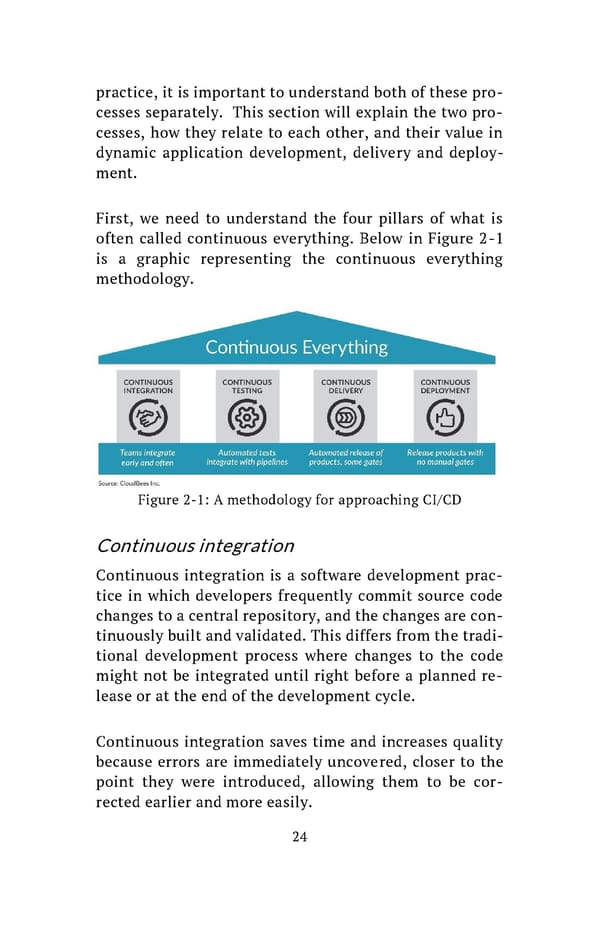practice, it is important to understand both of these pro- cesses separately. This section will explain the two pro- cesses, how they relate to each other, and their value in dynamic application development, delivery and deploy- ment. First, we need to understand the four pillars of what is often called continuous everything. Below in Figure 2-1 is a graphic representing the continuous everything methodology. Figure 2-1: A methodology for approaching CI/CD Continuous integration Continuous integration is a software development prac- tice in which developers frequently commit source code changes to a central repository, and the changes are con- tinuously built and validated. This differs from the tradi- tional development process where changes to the code might not be integrated until right before a planned re- lease or at the end of the development cycle. Continuous integration saves time and increases quality because errors are immediately uncovered, closer to the point they were introduced, allowing them to be cor- rected earlier and more easily. 24
 Building Cloud Native Apps Painlessly Page 27 Page 29
Building Cloud Native Apps Painlessly Page 27 Page 29